Learning can be tough, but it doesn’t have to be mysterious. Ample research shows that there are better ways of studying, not just for passing the test, but for creating deep understanding.
Below are ten essential strategies you should keep mind any time you need to learn something important.
These lessons are drawn from my course, Rapid Learner. We’ll be having a new session soon—sign-up for the waiting list here.
1. Practice on Questions From the Test
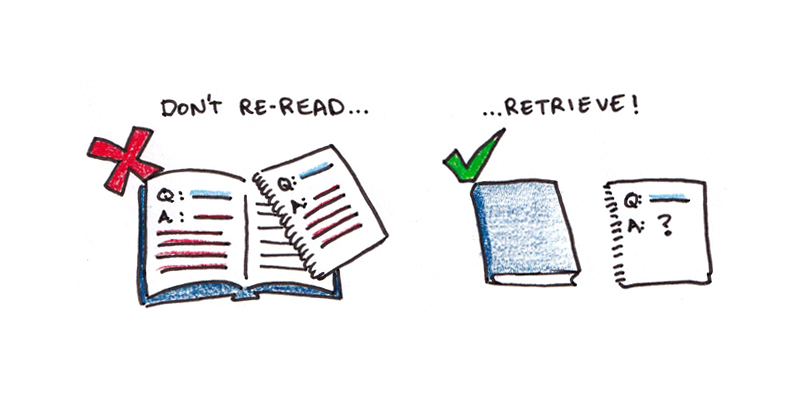
All skill depends on practice. So too, with memory. If you want to remember something, you need to practice remembering it, not just looking at it.
Retrieval practice—where you shut the book and try to recall what you’ve learned without looking at it—is one of the most effective studying techniques.1 It beat fancier techniques like concept mapping in head-to-head trials.2 Retrieval also works even if you can’t get feedback.3 The value of actively trying to remember goes beyond simply correcting mistakes.
The best questions to test yourself on are those most similar to the test. But, if you don’t have access to those, it’s better to practice harder forms of practice—think writing an essay and not multiple choice. These desirable difficulties lead to more efficient studying over easier tests.4
2. Expose Yourself Multiple Times to the Same Information
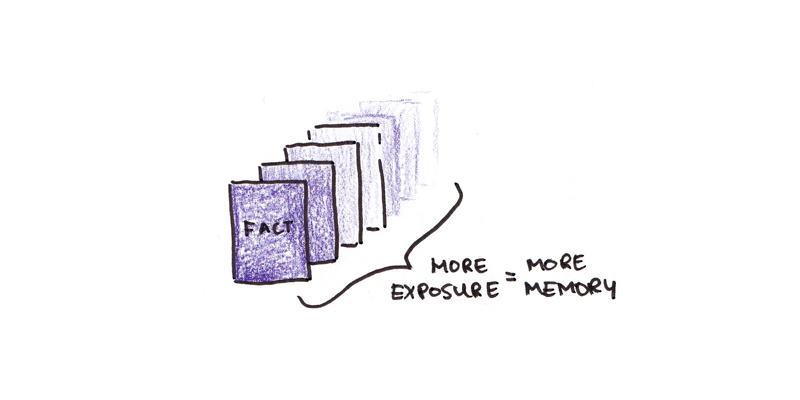
If the first key to learning is practice, the second is repetition. Memories tend to diminish in strength over time, quickly at first and more gradually later. This is known as the forgetting curve, and its relentless erosion of our memory is the bane of all students.
Yet there is a strategy that causes memories to be retained longer—spreading out your exposure through time. If you can be exposed to a fact, idea or procedure multiple times, you’ll retain it far longer than if you experience it only once. Even better if these exposures are spread out over weeks instead of just hours.
The lesson: avoid cramming if you want to learn things deeply. Whenever possible, test yourself throughout your classes, not just on the current unit, but on previous ones. This sounds tedious, but it ends up saving time needed to learn everything right before the exam.
3. Drill the Basics Until They’re Automatic
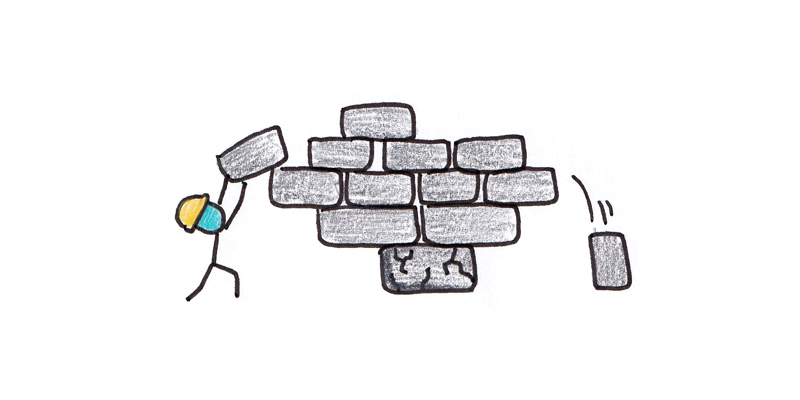
Complex skills are built out of simpler parts. Basketball is shooting, passing and dribbling. Drawing is proportions, lighting and lines. Math is addition, multiplication, algebra and more.
One challenge to learning is when the basic parts aren’t fully learned, performing more complicated skills quickly becomes impossible. Researchers call this cognitive load, and note that it is a major impediment to learning hard skills. Direct instruction, one of the most successful teaching methods ever studied, overcomes this by ensuring core skills are mastered before moving to harder tasks.5
Whenever you’re struggling to learn anything, always ask if you’ve mastered the basics. The feelings of inadequacy that frustrate harder skills can often be remedied by fixing the foundation.
4. Test Your Knowledge Before You’re “Ready”
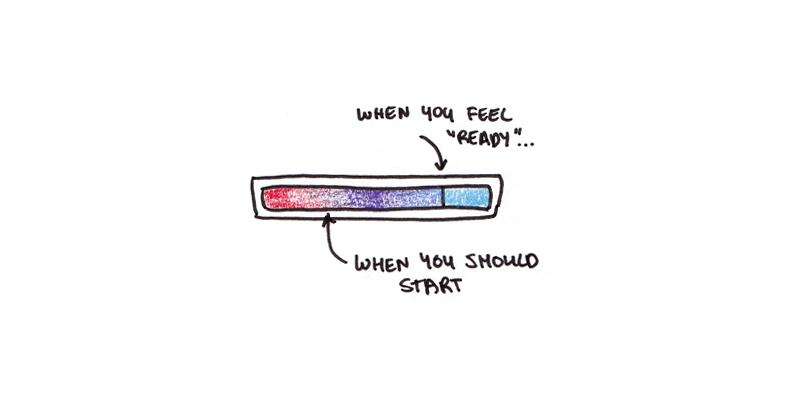
Most students know they eventually need to test themselves on what they’ve learned, if they’re going to learn it deeply. But many feel that they aren’t “ready” for this stage yet, so they stick to re-reading their notes at first.
Yet clever experiments show that this is a mistake. A clever experimental manipulation found that the students who would have chosen passive review, nonetheless did better when they were forced to do practice instead.6 Other research shows that taking a test before you learn the material can prime better learning.7
The rule of thumb should be to test yourself before you feel ready. The more you can shake the feeling that you need to do well on the first attempts at practice, the better you’ll learn.
5. Slow Down to Understand Better
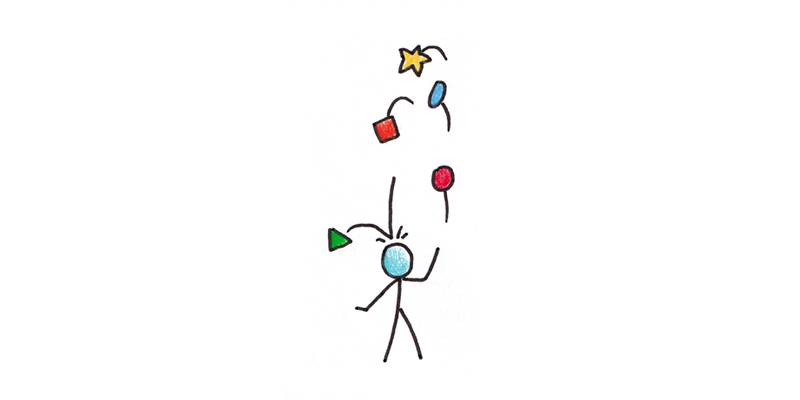
Few things are more frustrating than leaving a lecture feeling, “Huh?” You know you need to understand to keep going, but the big picture eludes you.
One reason this happens is because of our limited working memory. This concept corresponds roughly to what we think of as our mental bandwidth. It can only hold a few items at a time.8 If you’re required to put together a dozen different pieces to understand an idea, then, you’ll be hopelessly lost.
The fix is to slow things down. Write out what you’re trying to learn on a piece of paper, and go through each sentence or step in a calculation one-at-a-time. By offloading some of the problem to paper, you can free up space in your working memory to see the connection you need.
6. Get Clear on What Confuses You

If you’ve slowed things down and you’re still stuck… what then? In this case, you need to flip the problem. Instead of trying to understand the idea all at once, you need to ask yourself what’s missing to understand it.
Take a complicated math problem you don’t understand. Try walking through each step in the calculation. At which line of the derivation do things not make sense to you? Those might be points where a concept was being applied that the teacher assumed you understood. It might be two or three steps confusingly compressed into one. In either case, you now have a much more specific question to ask—and the answer is much more likely to resolve your confusion.
This doesn’t just apply to math classes. Confusing paragraphs in philosophy can be stepped through, one-word-at-a-time, making sure you understand the point of each. Explanations for concepts in business or biology can be walked through until you find the sentence you don’t understand.
Debugging an understanding is tough work, but it ultimately saves far more time than the frequent alternative—rote memorization.
7. Never Multitask
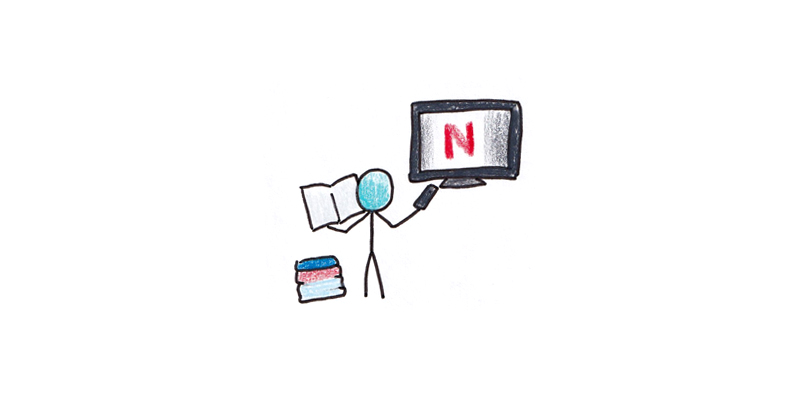
Multitasking is a misnomer. We’re never actually doing two things at once. Instead, when we multitask, we’re quickly switching between tasks in our minds.
Each of these switches comes at a cost, however. The contents of the previous task stay with our mind for awhile, even as we work on the new one. This cognitive residue makes mental performance harder, and can make learning nearly impossible.9
Obvious fixes are to silence your phone, turn off email and remove noisy distractions. Music with lyrics ought to be avoided, since these take up space in our working memory devoted to processing language. Instrumental music does better, but quiet (or white noise, if silence is impossible) does even better.10
8. Don’t Get Too Far From the Real Thing
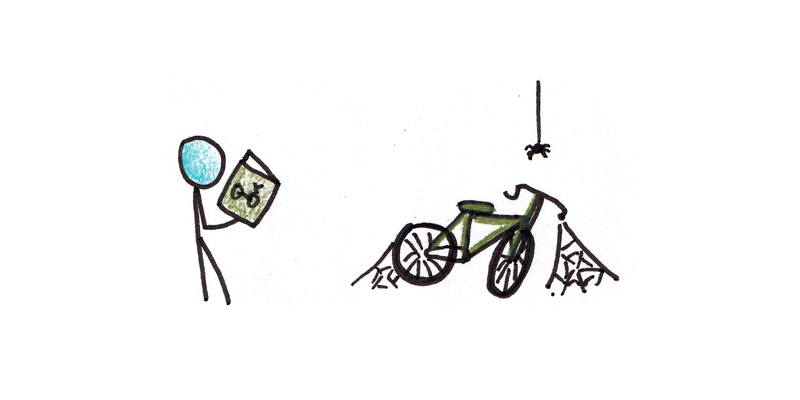
What if your goal isn’t just to pass a test, but to learn a real skill? Here the problem of transfer rears its ugly head.
Many studies show that what is learned in one context is often not transferred to other contexts.11 Some of this can be blamed on students failing to learn things deeply in the first place.12 By obtaining only a superficial understanding, it’s harder to abstract the deeper principles behind things.
Yet a deeper problem is simply that using any knowledge depends on a whole set of invisible skills.13 Knowing a programming concept, like recursion, for a test is one thing. Being able to notice that the current problem in your work would be best solved with a recursive algorithm is another.
One fix is to always keep the real thing you care about close when learning. Going back between more formal learning and real projects can be helpful. This not only prevents knowledge from ossifying into something purely academic, but it also acts as a check to ensure you’re learning what mattered most in the first place.
9. Pretend to Teach It
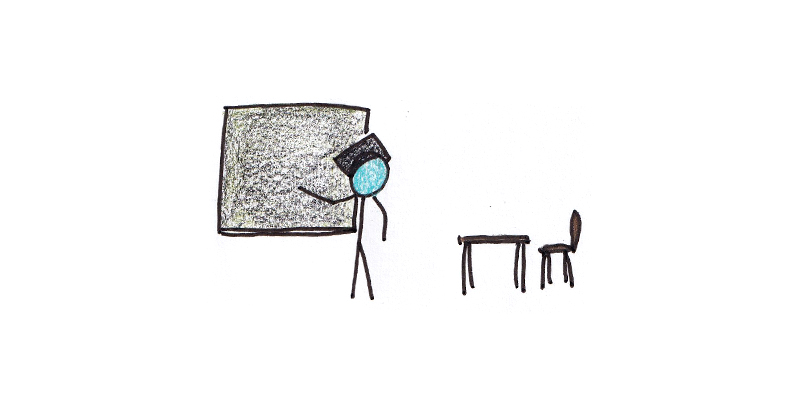
The teacher often learns more than the student. Teaching something, even if just pretending, forces you to confront what you know and don’t know.
Putting something into your own words checks whether you really understand it, or are just memorizing a definition. Coming up with analogies that would help someone else learn, helps you figure out if you have a good picture for how things work. Showing how to solve a problem, makes clear you’ve mastered it.
Teaching something combines many of the techniques mentioned previously. If you do it with the book closed, it’s a form of retrieval practice. It forces you to master the basics, slow down to deal with your own confusions and gives you feedback. What’s more, since the goal of much learning is to leave with a deep understanding, being able to teach something is often the real thing that matters. If you can share an idea, you can be sure it doesn’t get stuffed away to a dusty, unused corner of your mind.
10. Find Your Reason to Be Interested
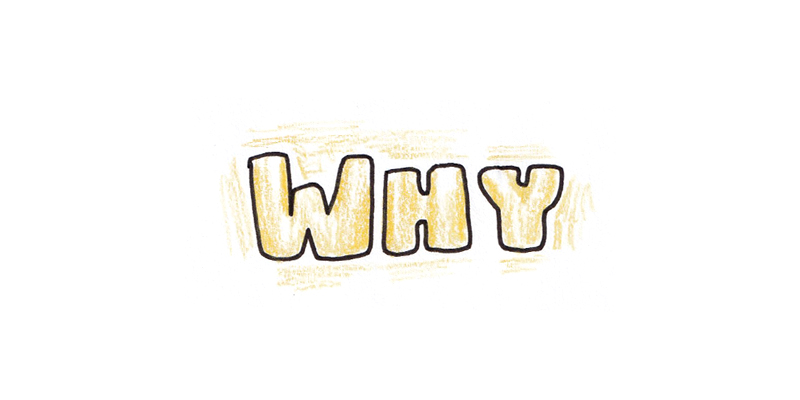
What’s your motivation to learn? Is it to pass tests or develop a deep understanding? Research shows that students with the latter motivation, ironically, do better than those whose only aim is to pass the test.14
Genuine interest can’t be faked, but it can be fostered. Ideas are often presented in a detached way in classes. Their history, when they were bedeviling puzzles, not just established facts, and their future applications are often omitted to save time. If you can find a reason to be interested in insight and not just a grade, you’ll often end up with both.
Next week, I’ll be offering a new session of my six-week course, Rapid Learner. If you found these strategies helpful, but want to master your own tools for learning well, then you might want to join our next session.
Before we open, I’ll be sharing three more lessons like this one. Stay tuned!
Footnotes
- Roediger III, Henry L., and Andrew C. Butler. “The critical role of retrieval practice in long-term retention.” Trends in cognitive sciences 15, no. 1 (2011): 20-27.
- Karpicke, Jeffrey D., and Janell R. Blunt. “Retrieval practice produces more learning than elaborative studying with concept mapping.” Science 331, no. 6018 (2011): 772-775.
- Ibid.
- Bjork, Elizabeth L., and Robert A. Bjork. “Making things hard on yourself, but in a good way: Creating desirable difficulties to enhance learning.” Psychology and the real world: Essays illustrating fundamental contributions to society 2, no. 59-68 (2011).
- Stockard, Jean, Timothy W. Wood, Cristy Coughlin, and Caitlin Rasplica Khoury. “The effectiveness of direct instruction curricula: A meta-analysis of a half century of research.” Review of Educational Research 88, no. 4 (2018): 479-507.
- Karpicke, Jeffrey D. “Metacognitive control and strategy selection: Deciding to practice retrieval during learning.” Journal of Experimental Psychology: General 138, no. 4 (2009): 469.
- Yang, Chunliang, Rosalind Potts, and David R. Shanks. “Enhancing learning and retrieval of new information: a review of the forward testing effect.” NPJ science of learning 3, no. 1 (2018): 1-9.
- Miller, George A. “The magical number seven, plus or minus two: Some limits on our capacity for processing information.” Psychological review 101, no. 2 (1994): 343.
- Leroy, Sophie, 2009. “Why is it so hard to do my work? The challenge of attention residue when switching between work tasks,” Organizational Behavior and Human Decision Processes, Elsevier, vol. 109(2), pages 168-181, July.
- Perham, N. and Currie, H. (2014), Does listening to preferred music improve reading comprehension performance?. Appl. Cognit. Psychol., 28: 279-284. doi:10.1002/acp.2994
- Haskell, Robert E. Transfer of learning: Cognition and instruction. Elsevier, 2000.
- Gardner, Howard E. The unschooled mind: How children think and how schools should teach. Basic books, 2011.
- Polanyi, Michael. Personal knowledge: Towards a post-critical philosophy. University of Chicago Press, 2015.
- Elliott, Elaine S., and Carol S. Dweck. “Goals: An approach to motivation and achievement.” Journal of personality and social psychology 54, no. 1 (1988): 5.


 I'm a Wall Street Journal bestselling author, podcast host, computer programmer and an avid reader. Since 2006, I've published weekly essays on this website to help people like you learn and think better. My work has been featured in The New York Times, BBC, TEDx, Pocket, Business Insider and more. I don't promise I have all the answers, just a place to start.
I'm a Wall Street Journal bestselling author, podcast host, computer programmer and an avid reader. Since 2006, I've published weekly essays on this website to help people like you learn and think better. My work has been featured in The New York Times, BBC, TEDx, Pocket, Business Insider and more. I don't promise I have all the answers, just a place to start.